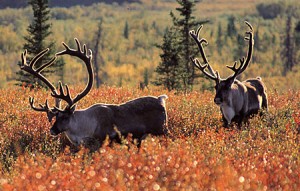
Originally thought to total 206,000, the Western Arctic Caribou herd is smaller than first estimated.
A new photo survey done by the Department of Fish and Game indicates the Western Arctic Caribou herd totals 201,000.
The herd is Alaska’s largest that many use for subsistence and sport hunting.
Photo surveys of the herd are done every two to three years. Wary of the population nearing numbers appropriate for reduced harvest recommendations, officials on the Baldwin Peninsula have been carefully monitoring the herd.
“One of the concerns brought up was that they weren’t able to do a survey in 2015,” Wildlife Division Chief Chris McKee said. “The conditions for taking pictures, the light conditions, were not good so it didn’t allow them to really get good pictures in order to count the herd.”
Without an accurate count, and a history of user conflict in the area, the Federal Subsistence Board passed a special action to keep non-resident hunters out starting July 1 of this year in hunting Unit 23.
Now, the survey will be used in the latest information to repeal the special action.
“Our office is all of a sudden responsible for providing the analysis and then it goes through several levels of review before finish analysis is given to the board,” McKee said. “The board sees that analysis, deliberates, and has a vote to determine how they’re gonna come down on the issue”
The information to repeal the action is currently in the last stage of review. After review, the analysis will go to one more committee. That committee will make a policy recommendation to the Federal Subsistence Board. And after everything is said and done, the board will vote to overturn the special action, or continue to keep non-resident hunters out of Unit 23.
Tyler Stup is a reporter at KNOM in Nome.
Born and raised in Colorado, Tyler graduated from Colorado State University class of 2016. Majoring in economics, he sought a path that combined his studies and radio. When the opportunity came to do radio in Western Alaska he jumped at it the first chance he got. He’s been in radio for three-and-a-half years now and has loved every second of it.




